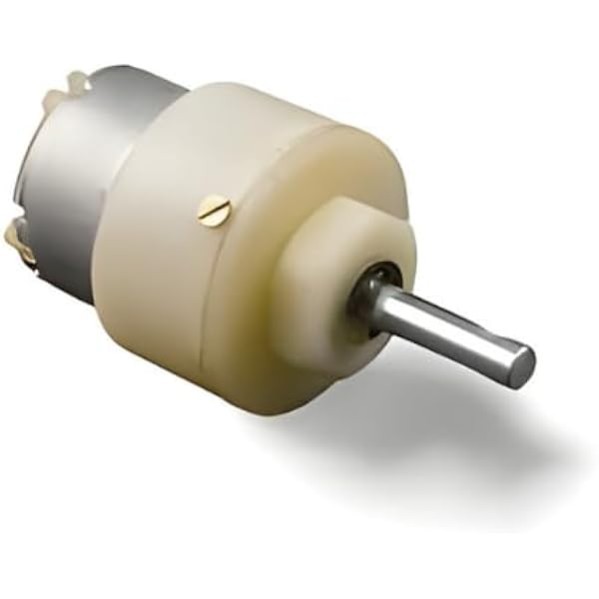


.jpg&width=620&quality=80)





.jpg&width=172&quality=80)





.jpg&width=300&quality=80)


10 rpm DC Geare Motor
12V straight DC motors are a type of simple direct current motor that do not have a gearbox. They are designed to be used with a DC speed controller and have a wide range of power output
₹ 148 ₹199
199
Add FAQ
A 12V DC motor is a type of direct current (DC) motor that operates on a 12-volt power supply. These motors are widely used in various applications due to their simplicity, efficiency, and ease of control. Here's a comprehensive description of a 12V DC motor:
Key Features:
-
Voltage:
- 12V DC: Operates on a 12-volt direct current power source. This is a common voltage for many small to medium-sized motors used in automotive, robotics, and consumer electronics.
-
Motor Type:
- Brushed DC Motor: The most common type of 12V DC motor, featuring brushes and a commutator to switch current in the motor windings.
- Brushless DC Motor (BLDC): A more advanced type that uses electronic commutation instead of brushes, providing higher efficiency, longer life, and reduced maintenance.
-
Speed and Torque:
- Speed: Varies based on design and load conditions. Typical speeds range from a few hundred to several thousand RPM (revolutions per minute).
- Torque: The rotational force provided by the motor. Higher torque motors are used for applications requiring significant mechanical power.
-
Efficiency:
- Brushed Motors: Generally less efficient due to friction and wear of brushes. They are, however, simpler and cheaper.
- Brushless Motors: More efficient with less energy loss and heat generation. They require electronic controllers for operation.
-
Construction:
- Stator: The stationary part of the motor that creates the magnetic field.
- Rotor: The rotating part that turns due to the interaction with the magnetic field.
- Commutator and Brushes (Brushed Motors): Used to switch the current direction in the rotor windings.
-
Control:
- Speed Control: Can be controlled using voltage adjustments or PWM (Pulse Width Modulation) techniques.
- Direction Control: Reversing the polarity of the power supply changes the direction of rotation.
-
Applications:
- Automotive: Used in electric windows, wipers, and seats.
- Robotics: For driving wheels, actuators, and other moving parts.
- Consumer Electronics: Found in devices like electric shavers, toys, and small appliances.
- Industrial Equipment: Used in conveyors, actuators, and small machinery.
Technical Specifications:
Typical Specifications for a 12V DC Motor:
- Voltage: 12V DC
- No-Load Speed: Typically 1000-5000 RPM
- No-Load Current: Approximately 0.5-2A
- Stall Torque: Can vary from a few hundred to several thousand gram-centimeters or ounce-inches, depending on the motor size.
- Size and Weight: Varies based on the motor design and application.
Wiring and Operation:
Wiring Diagram:
-
Power Supply:
- Positive Terminal (+): Connects to the positive terminal of the 12V DC power supply.
- Negative Terminal (–): Connects to the negative terminal of the 12V DC power supply.
-
Motor Control:
- Direct Control: For simple applications, connect the motor directly to the power supply.
- Speed Control: Can be achieved using a variable resistor (potentiometer) or PWM signal.

0 Reviews For this Product








3.jpeg&width=225&quality=80)







